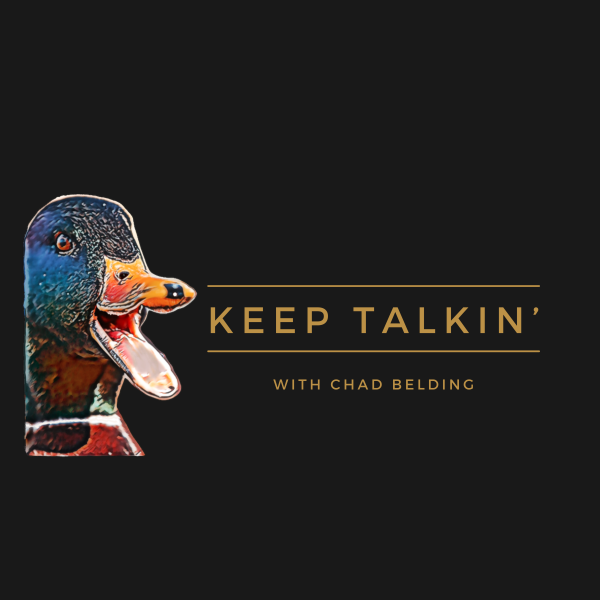
Hello, Fall! The season when some people think pumpkin spice, but some think waterfowl!
Chasing waterfowl in Canada, especially in Saskatchewan and Alberta, is a trip many of us eagerly plan and wait for each year. The vast prairies, rolling hills, and farmland as far as the eye can see massive bird populations, and the excitement of fooling birds that are fresh off the northern breeding grounds. Understanding what makes these Canadian provinces prime destinations and how to navigate the regulations will set you up for a smooth trip. So let’s get talkin’.
When we think of fall waterfowl in Canada, Saskatchewan, and Alberta often comes to mind first, and for good reason. These provinces host millions of waterfowl during the fall migration, including one of the most diverse varieties on the planet of duck and goose species. They are part of the Prairie Pothole Region, known as the "duck factory" due to its critical breeding and nesting habitats.
The little communities and camaraderie of friends and farmers coming together, the ag fields, particularly those with newly harvested crops bringing in massive numbers of eager feeders, the vast variety of species of ducks and geese, and this is often the first time migrators encounter agriculture on their journey south, often making them more willing to play nicely with your decoy spreads and calling.
Before you pack up and head up north, there are a few things to keep in mind. Having all of your documents ready to go will help keep your border crossing smooth, particularly if you plan on bringing a dog or firearm.
Passport: A valid passport is a must to get you across the border.
Hunting License and Permits: You’ll need a Canadian hunting license, and most provinces require a Migratory Game Bird Hunting Permit as well. You can purchase these online before you arrive to save time. Keep in mind that different provinces may have different legal hunting times.
Documents: To bring a gun into Canada, you must fill out a Non-Resident Firearm Declaration form (RCMP 5589) and present it at the border. There’s a fee associated, so be prepared to pay it upon entry. Ensure your firearms comply with Canadian regulations. Some shotguns might be restricted.
Dog Documents: If you're bringing your hunting dog, make sure all of their vaccinations are up to date and carry proof of the rabies vaccination. Canada may ask for a health certificate from your vet, so have one prepared.
A significant change in Alberta’s hunting laws this year affects non-resident hunters. Previously, American hunters could hunt waterfowl throughout the season on a DIY basis, but the Alberta government has now limited non-resident hunters to a maximum of two weeks without an outfitter.
So, if you plan on hunting without an outfitter, you’ll need to select your two-week period wisely. If you prefer more flexibility or an extended stay in Canada, hunting with an outfitter is now required.
Now that you know the requirements, let’s dive into a quick summary of some of the pros and cons of DIY hunting trips versus booking an outfitter. We’ve dove deeper into the detail of this last season, so if you need more in-depth information, take a look back through the Keep Talkin’ archives from fall last year.
DIY Hunting
Pros:
Flexibility: planning your own schedule, adjusting locations based on bird movements, and scouting at your own pace. The DIY route allows you to adapt as you see fit, especially when working with landowners.
Cost: While you’ll need to invest in permits, fuel, and possibly decoys, going DIY can sometimes save you money compared to outfitter packages.
Satisfaction: There’s a unique sense of accomplishment in scouting your own spots, setting up your own blind, and calling in birds on your terms.
Cons:
Logistics: On a DIY trip, everything falls on you, from finding productive fields and securing permission from landowners to transporting your gear and planning/managing the hunt. This can be overwhelming, especially if it's your first time and you don't have landowner contacts.
Knowledge of the Land: Scouting without a guide can be challenging, particularly if you lack local contacts. You’ll need to put in time both before and during your trip to understand bird patterns and field availability.
Limited Hunting Window: With Alberta’s new two-week restriction, you’ll have to carefully plan your trip.
Hunting with an outfitter
Pros:
Access to Prime Land: Outfitters often have exclusive access to private fields and spots that DIY hunters may not have access to. They’ve built relationships with landowners and have years of experience behind them in the area.
Local Knowledge: Outfitters know the behavior of birds in their areas, cutting out the guesswork.
Provide Gear: They provide everything you may need, from firearms, decoys, and blinds to food and lodging, taking the pressure off you to haul everything across the border.
Building Lasting Friendships: When we hunt with Grant Kuypers at Buck Paradise in Saskatchewan, the experience goes way beyond the time spent in the field. These guys are so above average in outfitting they truly stand out as one of the best in the world. There is something to be said for the camaraderie and friendships built in places like Buck Paradise.
Cons:
Cost: Outfitter packages can be expensive, especially when including lodging, meals, and services. The convenience and expertise come at a price.
Less Flexibility: You'll be on the outfitter's schedule for the duration of the hunt, and you may have no or less control over location choices or the pace of your hunt.
To find a reputable outfitter in Canada, visit the Alberta Professional Outfitters Society (APOS) website at https://www.apos.ab.ca/. or visit the Saskatchewan Commission of Professional Outfitters website at https://scpo.ca/.